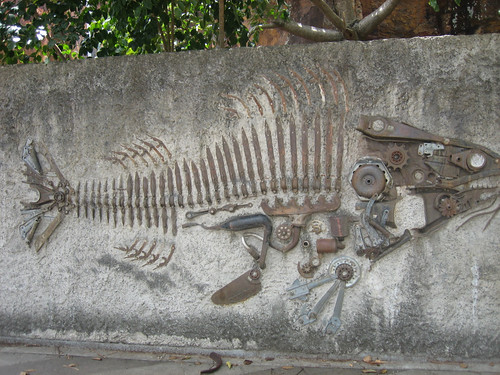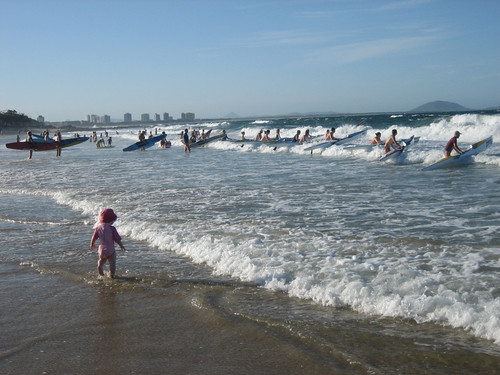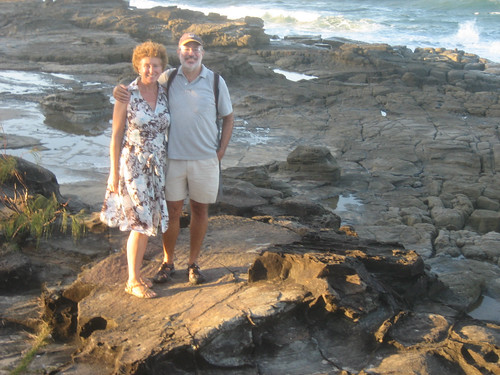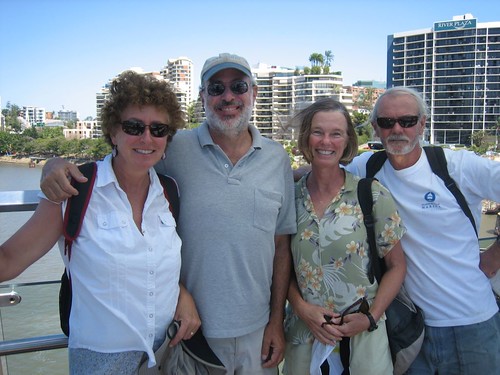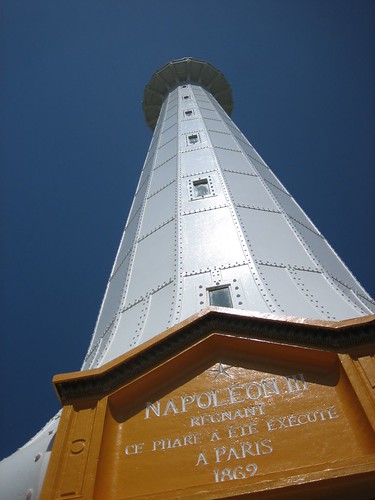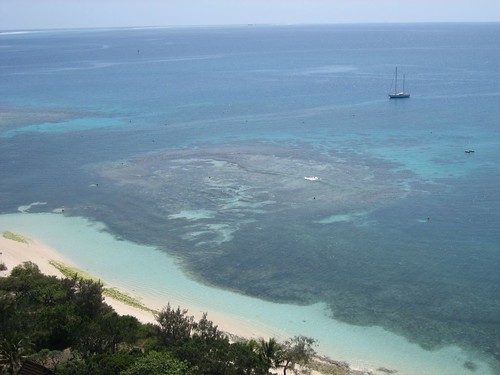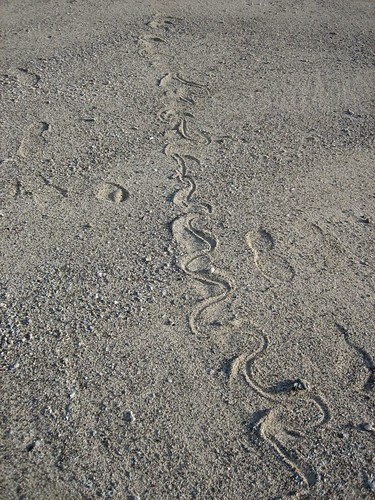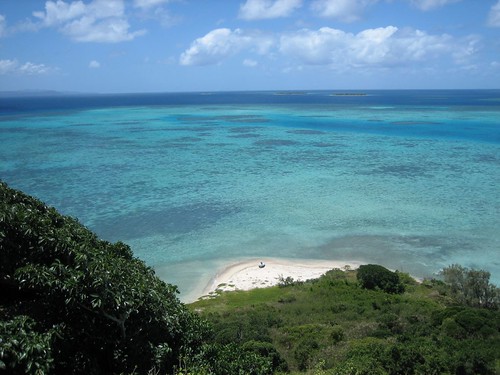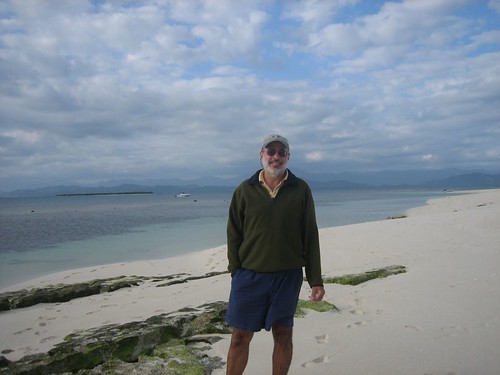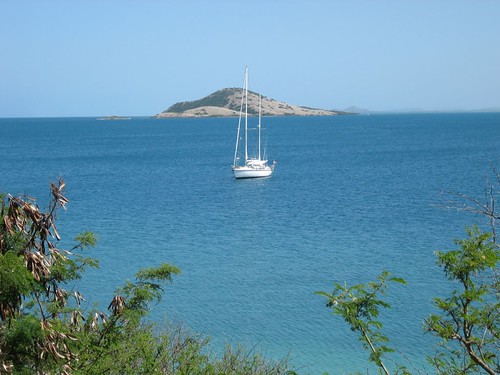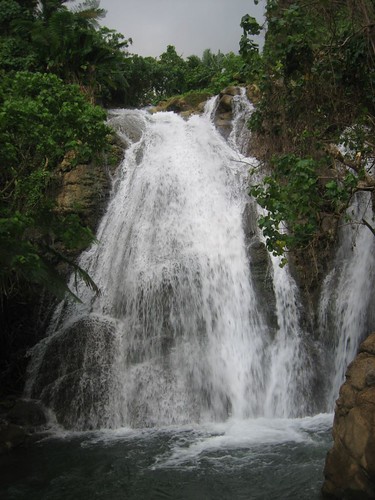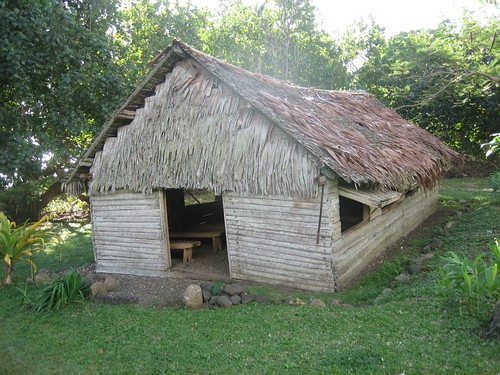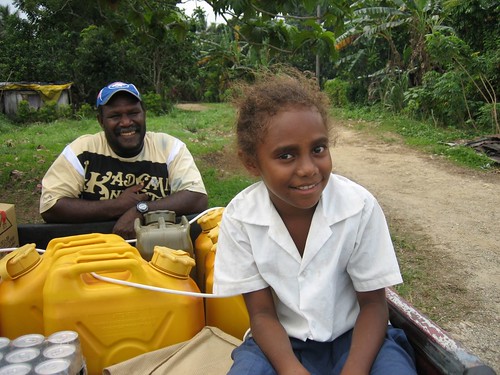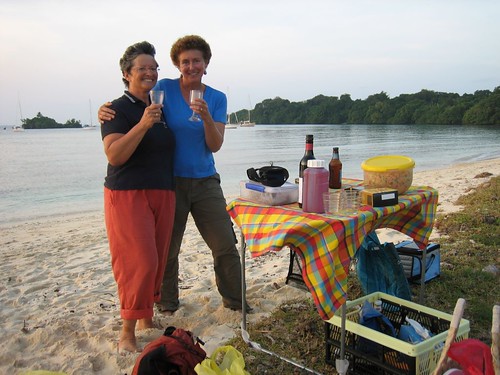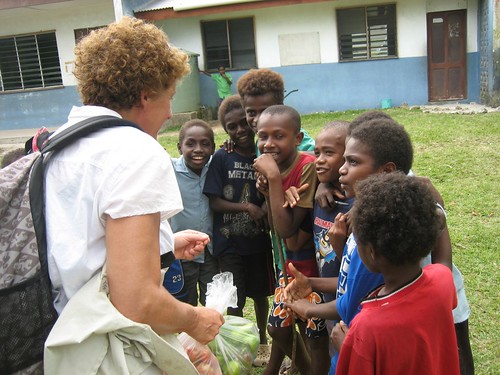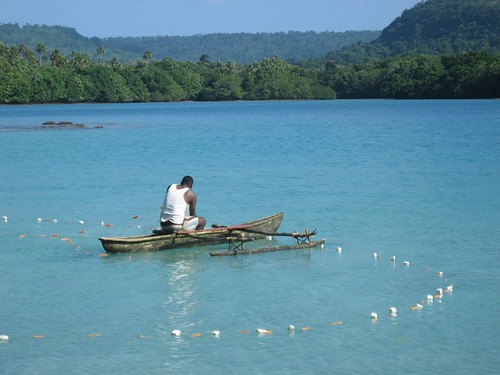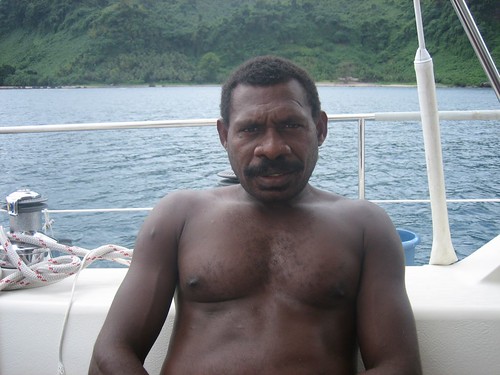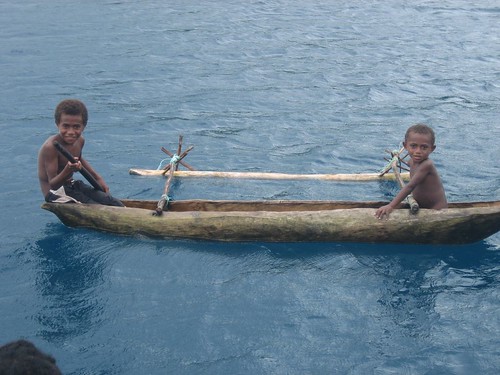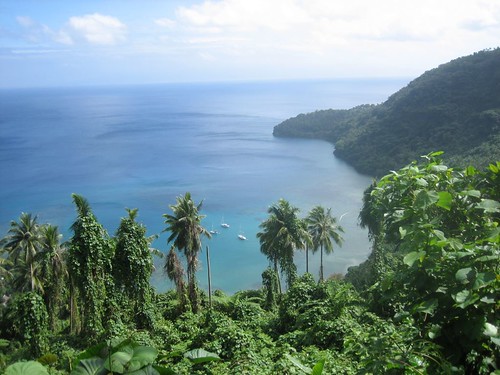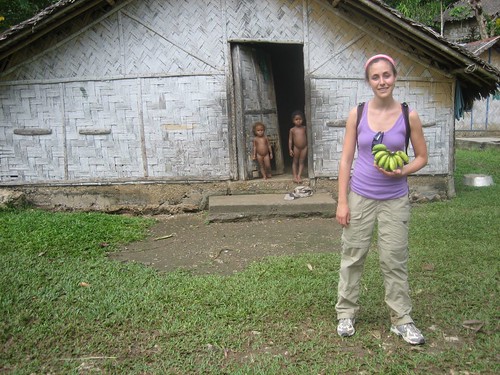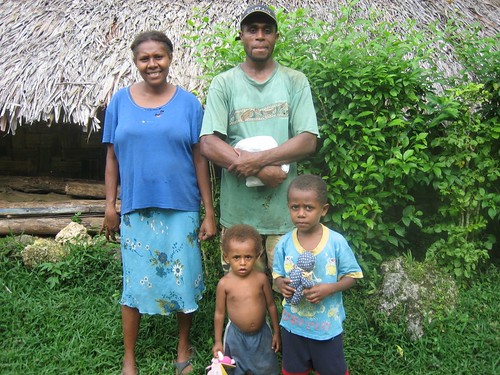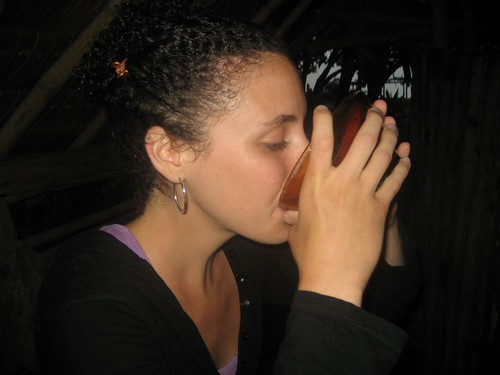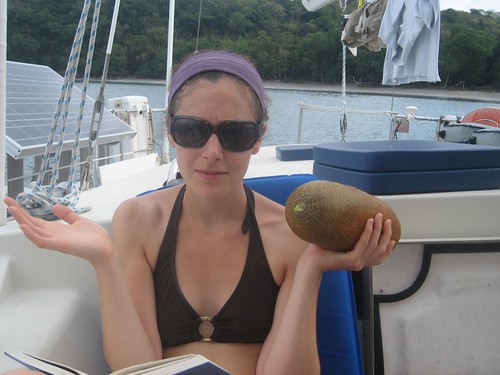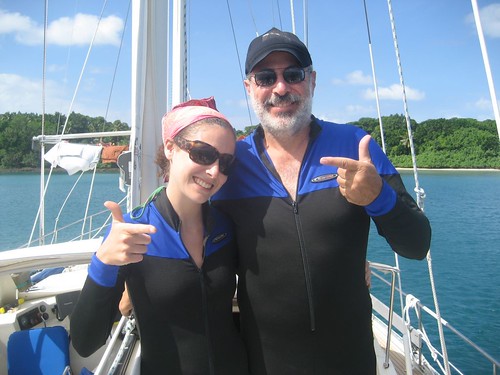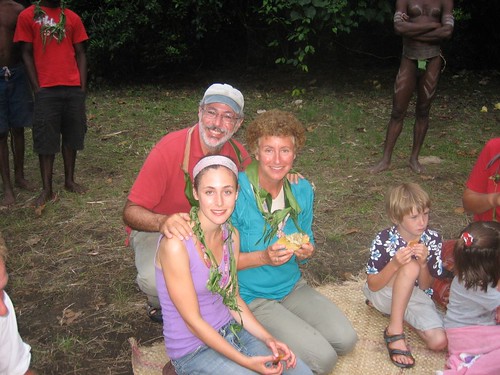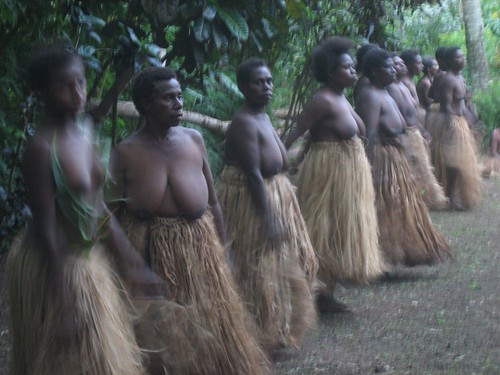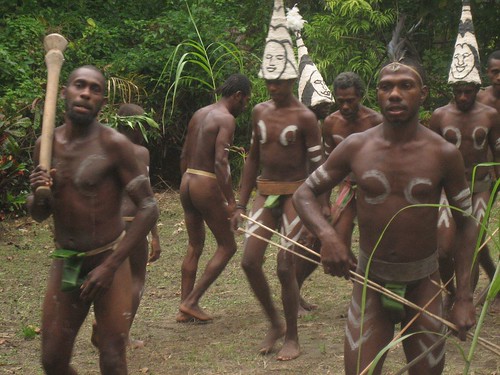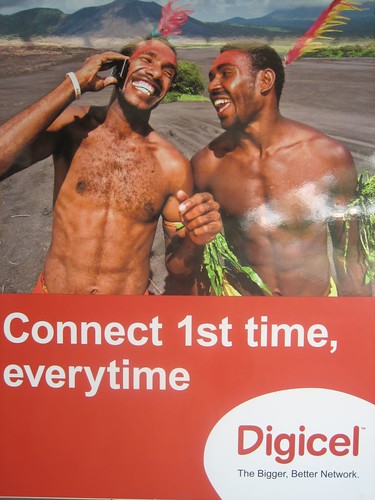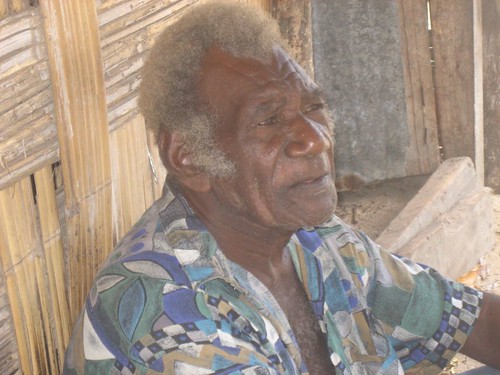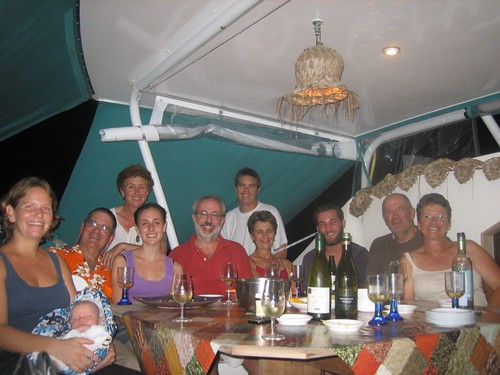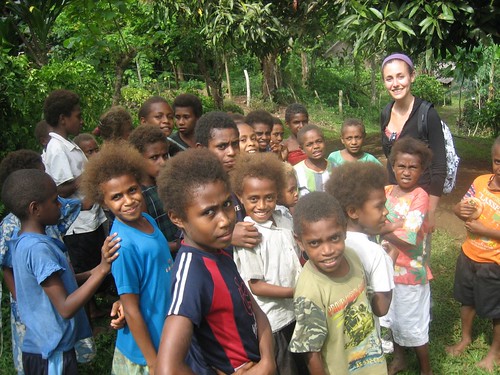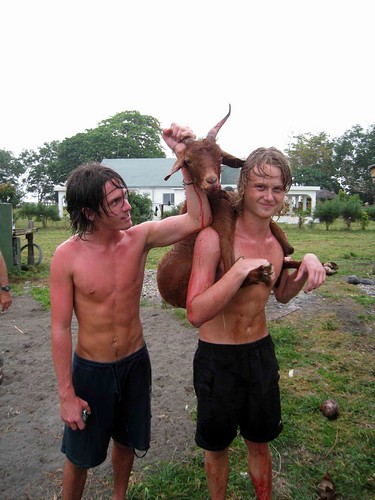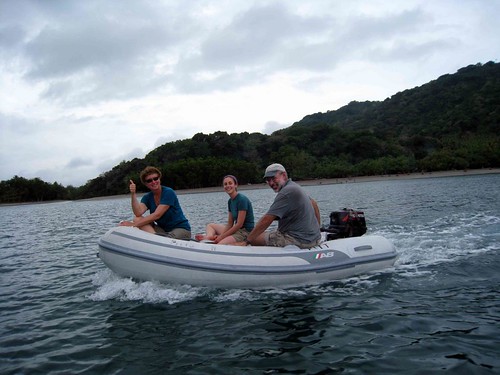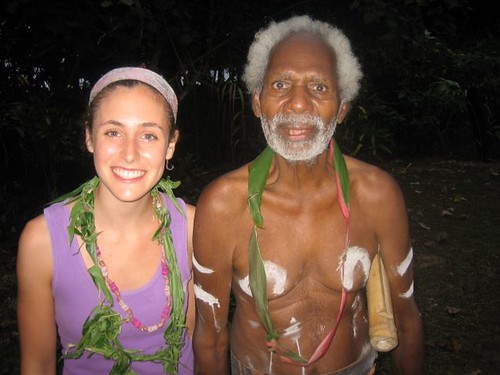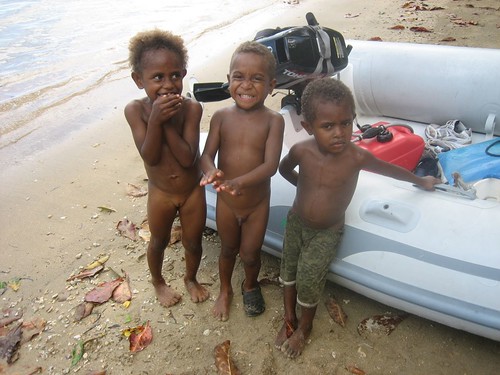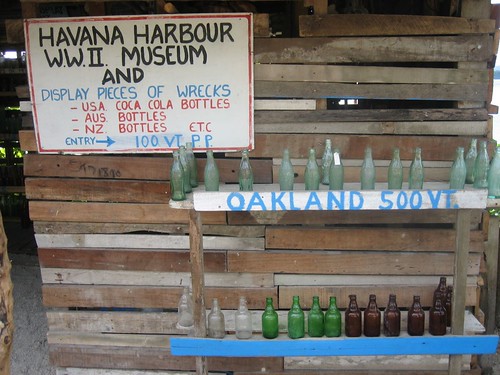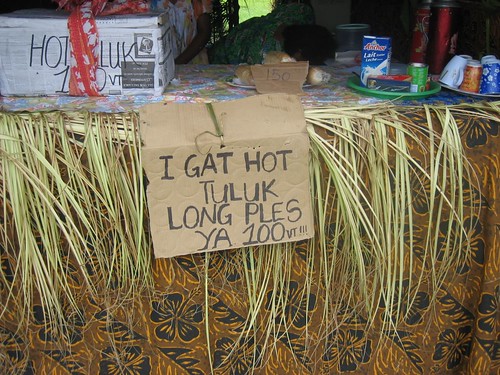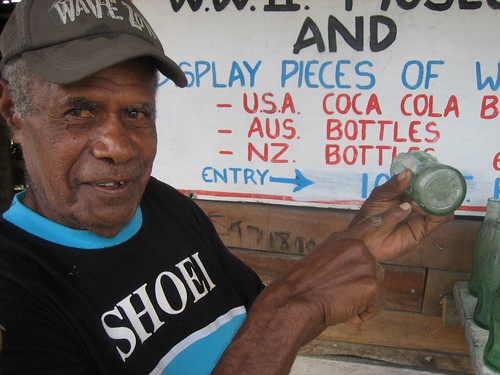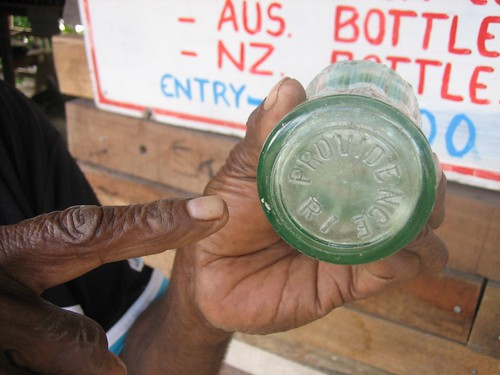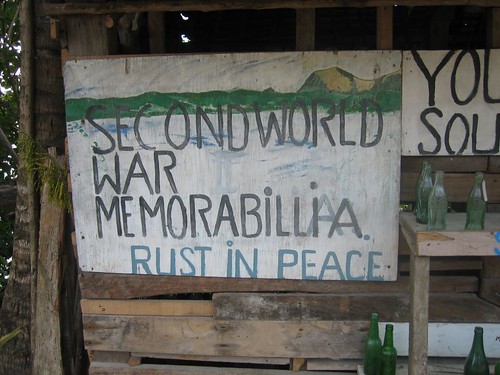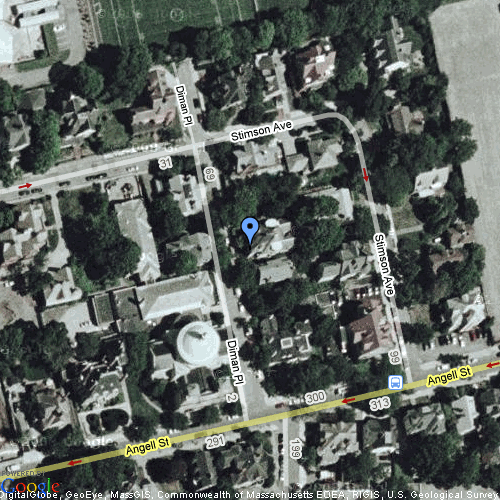It’s Hannah, here, reporting to you from Banam, a lovely, wide bay in eastern Malekula Island. We arrived here two days ago after a smooth sail from the Maskelynes. Despite the gentle weather on Saturday, a low pressure system brought thunder, high winds, and sky-illuminating bolts of lightning the night before. Fortunately, our anchorage, nestled between two very green, lush islands, kept us protected.
After setting anchor in Banam, I inflated the kayak– first riding with Mom, then with Dad. As the sun set– one of the most magnificent I’ve seen yet in Vanuatu– Dad and I met some young boys heading out on wooden canoes to the reef to catch Longmouth (aka Barracuda, the same fish we ourselves caught and ate earlier this trip…yum). The next day we took the dighny out to a reef that extends from the edge of the bay to check out the snorkling. As we swam up to the drop-off, falling from 2 to nearly 100 feet, I almost chickened out and headed back to the dignhy. Even with the reassurance of our guide books and of the locals that there are only “nice” sharks here, I must admit that I find it of little comfort when actually faced with a bottemless blue abyss. But I couldn’t bear to wimp out in front of my fearless, seafaring pirates… I mean parents. So I forged ahead, and the beautiful coral and vibrant sealife, including a very bizzare looking cuddle fish spotted by Dad, made it worth pressing on. I did see two sharks slinking gracefully along the coral, roughly 6 feet each. Go figure.Two other boats who had been at the Maskulyne anchorage with us, Flame from Australia and Kaitorete from New Zealand, sailed into Banam Bay in the afternoon. Kaitorete had caught a giant yellow fin tuna just a few hours before, and were nice enough to give us a huge hunk of it. We seized upon it as soon as we got back on board, eating half as sashimi, and half quickly seared with olive oil and ginger. Unbelievable.
Saturday night we had Kaitorete and Flame over for sundowners, along with Steve from Irony, who came in after us on Saturday. It was a very lively gathering, and I spent most of the evening playing with the two adorable kids from Kaitorete, 4-year-old Megan and 7-year-old Matthew. This morning, two young men from the village brought us 3 lobsters (actually, crayfish, to be precise), a sack of lemons, and a bunch of bananas. The lobsters were huge, and made for another fresh and delicious lunch. Before that, Mom and I worked up our appetites by swimming out to meet the kids and Annabelle from Kaitorete, and Diana from Flame, who were puttering around the coral bommies near the shore, spotting fish.
In the early afternoon, a young boy came by, carrying a guitar in his canoe (which he somehow managed to keep meticulously dry). Masint is 18 years old with very good English and the sweetest, most genuine smile. After a few minutes of chatting he came aboard so he could play some songs for us on his guitar. He performed three songs in Bislama, played guitar very well and sang with enormous enthusiasm. Mom and Dad gave him one of the MP3 players they had loaded with reggae and Vanuatu “string band” music. He was very pleased. “Nambawon!” he kept thanking us, always with a thumbs up and a broad smile.
Chief Saitol, founder of the Hefah Sar Culture Club here at Banam Bay, is an 85 year old, white-haired, big-bearded and charismatic chief– a legend among cruisers. He organizes performances of the village’s traditional Kustom Dances for visiting yachties. We organized with Chief Saitol to see the dancing Monday afternoon, and headed to shore with Kaitorete, Flame and Irony. As we distributed a bag full of cell phones, which the villagers had asked us to charged on our boats (no cars, no electricity, but everyone has a cell), two German boats sailed into the bay just in time to join us for the performance.
The villagers of Banam Bay belong to the greater Malekula tribe of the Small Nambas, distinct from the Big Nambas, their former rival tribe. And in their traditional costumes, consisting of a strategically-placed banana leaf, whether or not they are in fact small or big nambas is really for each to judge. About 15 male dancers so attired performed rhythmic steps to the beat of percussion instruments played by Chief Saitol and two other older men, who sang together in chorus. Lucky for me, I got to hold hands with my new friend Megan almost the whole time. Afterwards, women, ranging from children to grandmothers, performed a female Kustom Dance, wearing their traditional grass skirts. At the end of the event, Chief Saitol gave effusive thanks to the sailors for coming, and implored us to tell our friends in American, NZ, Australia, and Germany to come see his village…”Boost tourism!”. We finished with a sort of mini feast: a fresh coconut for each person to drink and a big spread of laplap, the traditional dish of flattened and fried manioc (or breadfruit) and meat, in this case chicken. Although the event was definitely a tourist attraction, given that the villagers would typically only perform the Kustom Dances at special occasions during the year, it still felt authentic and very much Vanuatan.
July 14:
It’s the following day now, Tuesday, and Sabbatical III is safely arrived in Loltong, on Pentecost Island. Phew! We left at 6 am this morning from Banam Bay, and had a whooper of a sail, averaging 7 to 8 knots the whole way. We were feeling great, approaching our destination 2 hours earlier than planned, when a nasty squall decided to park itself over us and Pentecost, effectively blowing straight out of the mouth of Loltong bay. With the rain driving right into our faces, and the wind howling at 25-30 knots, there was no way to make out anything, let alone the markings that supposedly indicate the safe entrance through the reefs. Moreover, Loltong bay, like much of Vanuatu, has not been well charted, so we could not rely on nautical charts. Just as we were about give up any hope of entering safely, thinking instead we would continue on to another island where we hoped conditions would be milder, Midnight Sun, a boat anchored in Loltong, offered to guide us in via VHF radio. Following his instructions, we safely approached the narrow break between two reefs that flank the sides of the bay. Now that we are anchored close in to shore, it is hard to believe it is blowing so hard just a half mile out. This anchorage is unlike any other I’ve seen here: the water is glassy and deep aquamarine, reflecting the green hillside that drops sheer down to the water and encircles the bay like a towering, vine-covered ampitheater. There are frequent rainbows, including a fantastic display that showed clearly against the hillside from end to end.
After a random assortment of snacks and water-guzzling all around, Mom and Dad have collapsed into their front berth for a very well-deserved nap. And now let me say what Dad would never say about himself: he is an outstanding captain. He is competent, responsible, and ready for anything that the sea, wind or weather might bring. Thanks Dad!
On that note, I’ll sign off. Our position is …
Hannah
Posted via email from sabbatical3blog’s posterous




